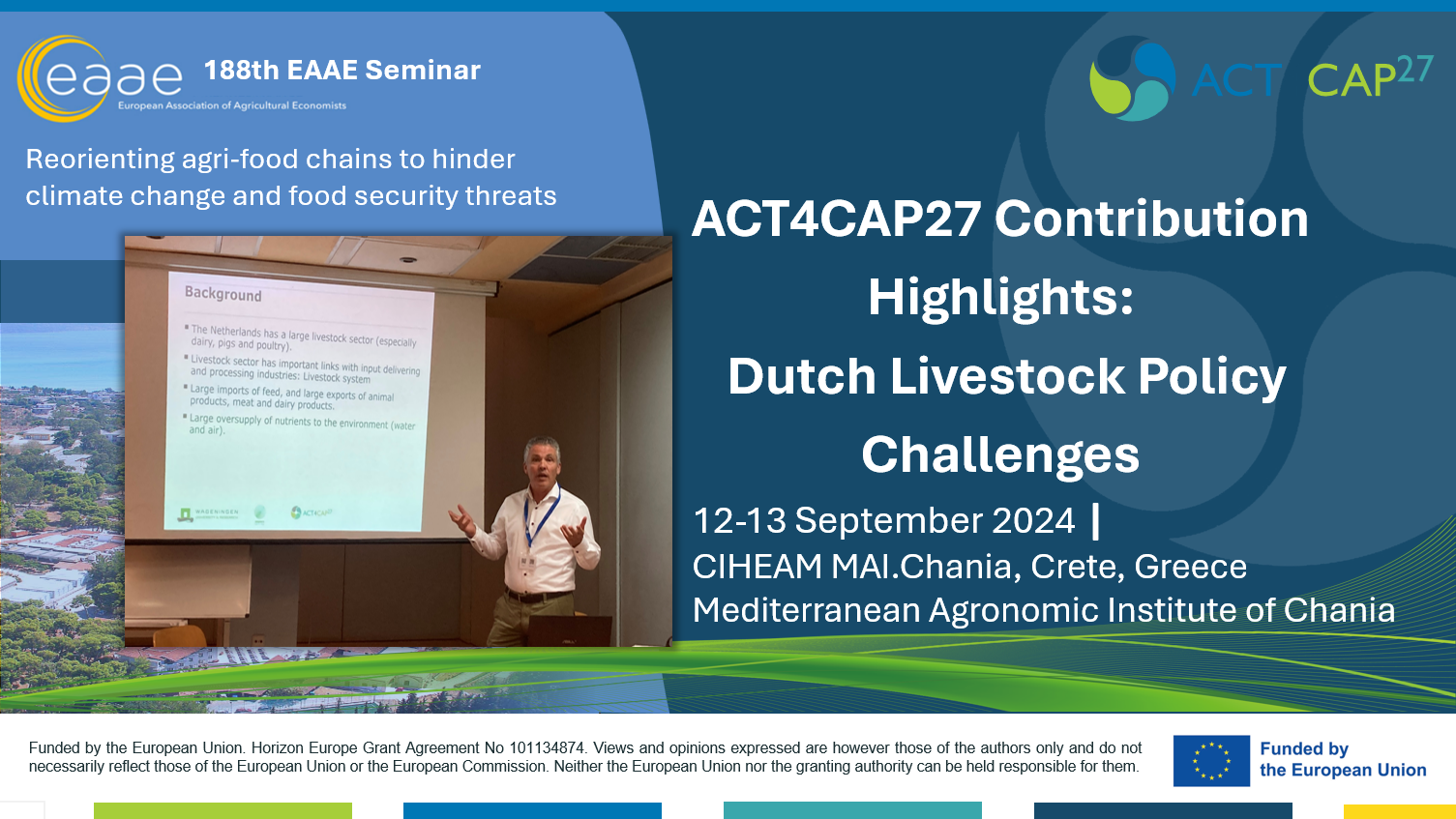At the 188th EAAE Seminar titled “Reorienting agri-food chains to hinder climate change and food security threats”, held on 12–13 September 2024 in Chania, Crete, a Wageningen University (WU) colleague Jack Peerlings presented research linked to ACT4CAP27, focusing on the Dutch livestock sector and its broader economic implications.
The paper, “The livestock system in the Netherlands under attack: an Applied General Equilibrium model approach”, showcased a single-country AGE model developed to assess the impact of livestock reductions in response to the ongoing nitrogen crisis.
The Dutch livestock sector faces challenges due to mineral oversupply, prompting policy discussions on reducing livestock numbers by up to 50%. Such reductions would impact not just farmers but also feed suppliers, meat and dairy processors, and advisory firms, given the Netherlands’ key role as an exporter of livestock products and an importer of feed (e.g., soy).
To assess these effects, this study develops an Applied General Equilibrium (AGE) model, which captures interactions across the entire economy. The findings indicate that while reducing livestock has substantial environmental benefits, its overall economic impact is relatively small, with the largest losses in the feed and processing industries—the most vocal opponents of downsizing. Compared to partial equilibrium models, AGE models show smaller economic effects due to greater substitution flexibility in product and labor markets.
A key consideration is trade leakage — if Dutch livestock production shifts to countries with weaker environmental regulations, global environmental degradation may worsen. This highlights the need for balanced policies that mitigate unintended consequences while achieving sustainability goals.
This modelling approach, while developed for the Dutch case, may serve as a future module in broader models like MAGNET under the ACT4CAP27 initiative.
Source: WU




